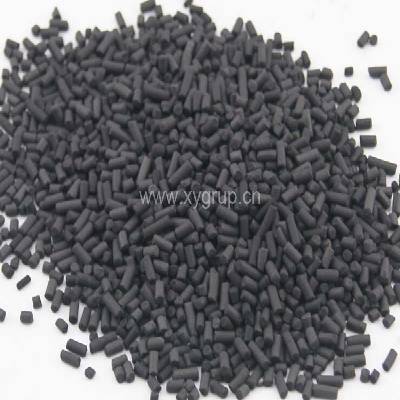Activated carbon is one of the commonly used substances in organic synthesis experiments, mainly used to decolor and remove impurities. According to the basic chemical experiment book, the standard method of using Activated Carbon is to filter and decolorize before recrystallization. In fact, there are other uses of activated carbon. Ingenious use of the properties of activated carbon to distinguish its advantages and disadvantages will bring a lot of convenience to organic synthesis experiments. .
The most common function of activated carbon is decolorization. According to the polarity analysis, activated carbon can be regarded as a non-polar substance, can be used to adsorb non-polar and small polar pigments, and is suitable for use in large-polar solvents.
Most of the pigments contained in the substance are non-polar or small-polar pigments, so the most commonly used decolorizer is activated carbon, and the most commonly used solvents are water and alcohols. Generally, when decolorization is required, the polarity of the pigment does not need to be considered, and the activated carbon is used for decolorization directly, and the decolorization effect is judged by observing the change of the solution before and after the decolorization.

Pellet Activated Carbons
Impurities here mainly refer to insoluble matters, such as inorganic salts, dust and physical impurities. The decolorization of activated carbon is actually impurity removal, except that the decolorization removes organic visible light absorption impurities.
The process of impurity removal is very simple, similar to the process of decolorization. After dissolving, add activated carbon and stir, then directly filter and concentrate. In fact, pure impurity removal can be done directly without activated carbon, and it can be directly filtered. The addition of activated carbon is mainly to take advantage of its role in assisting filtration, which is beneficial to filtration.
Adsorption is mainly for tar and viscous impurities. If activated carbon is not added to this type of substance, it will block the filter medium if it is directly filtered, and the general effect of activated carbon is obvious. When mainly using adsorption, activated carbon can be replaced by silica gel or diatomaceous earth, with little difference.
Usually in the process of using activated carbon, activated carbon simultaneously exhibits three functions of decolorization, impurity removal and adsorption. Colored impurities enter the inside of Activated Carbon Molecules, tar and viscous impurities exist between activated carbon particles, and activated carbon helps filter out insoluble impurities during filtration. The filtering process. The three functions cannot be seen separately.
If necessary, please contact the Activated Carbon Manufacturer
Copyright:@2020-2021
Comments Please sign in or sign up to post.
0
0 of 500 characters used